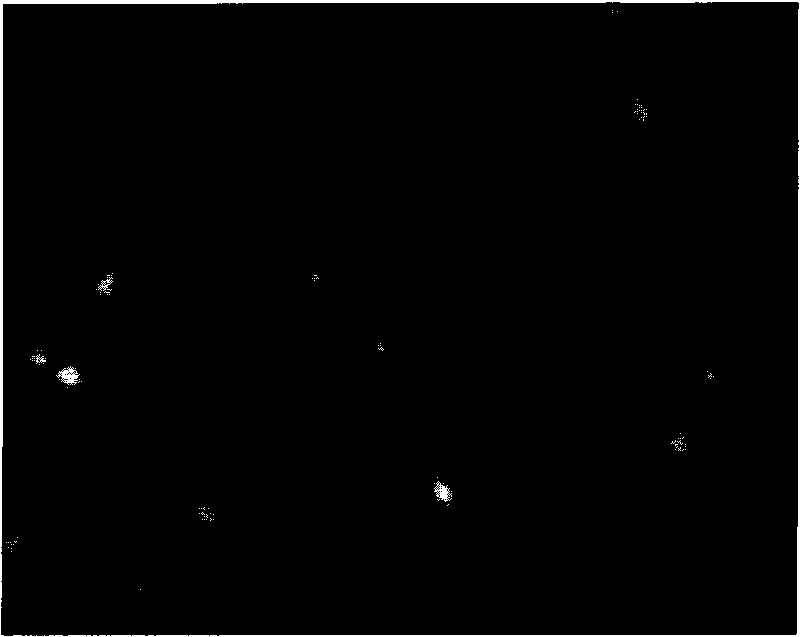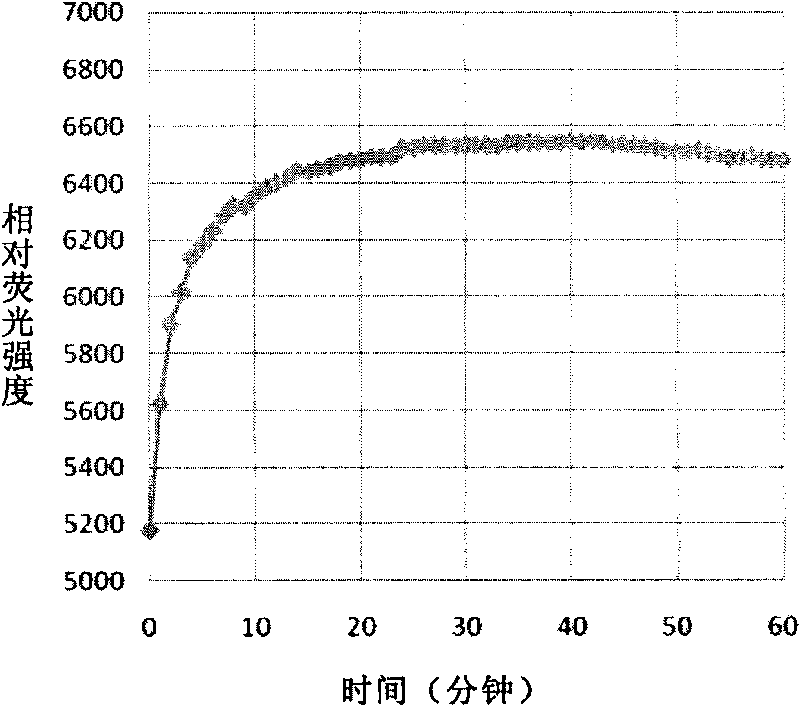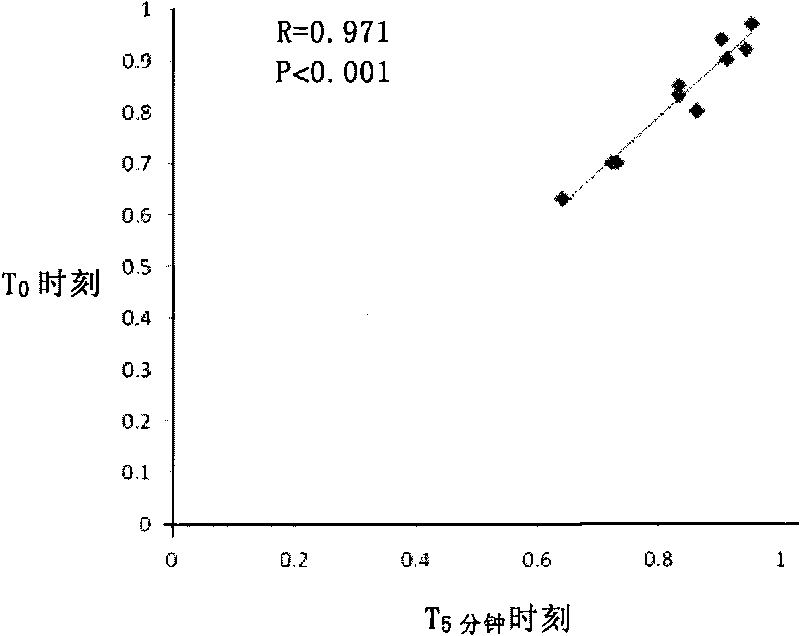Method for extracorporeally detecting survival rate of sperms
An in vitro detection and survival rate technology, applied in biochemical equipment and methods, biological testing, material inspection products, etc., can solve problems that affect the reliability of results, complex operations, and low efficiency
- Summary
- Abstract
- Description
- Claims
- Application Information
AI Technical Summary
Problems solved by technology
Method used
Image
Examples
Embodiment 1
[0074] Survival count method under fluorescence microscope
[0075] According to the WHO standard (from: Zhao Hongxin, Yuan Yao, Hua Minmin, Zhang Huiqin, Shi Huijuan using Transgreen / PI fluorescent counterstaining method to detect the survival rate of spermatozoa Chinese Journal of Andrology 22(4): 1-4), 37 Place in a water bath at ℃ until completely liquefied, take 50ul into an Eppendorf tube, add 1ul of A solution (the composition is Transgreen) and B solution (the composition is PI) to mix, let it stand at room temperature for 20min, take 10ul from the tube to a Macro sperm counting plate, and use fluorescence Observe under a microscope, count the number of green sperm and red sperm, count at least 200 sperm in total, sperm survival rate = number of green sperm / (number of green sperm + number of red sperm) × 100%.
[0076] see results figure 1 , Schematic diagram of Transgreen / PI counterstaining method under a fluorescence microscope. The results showed that under the ...
Embodiment 2
[0078] Using a fluorescent microplate reader to detect the time curve of Transgreen entering sperm and binding to DNA
[0079] Collect semen according to the WHO standard, put it in a water bath at 37°C until it is completely liquefied, and do upstream processing. After the sperm is optimized, take 50ul of the sperm suspension and add it to a 96-well microtiter plate, add 1ul of A solution (the composition is Transgreen), and use the enzyme The standard instrument continuously detects the fluorescence intensity of the sample every 1 min, sets the excitation light wavelength to 485nm, and the absorption wavelength to 515nm, and adds 1ul A solution with 50ul HTF as a blank control.
[0080] see results figure 2 , The change curve of the fluorescence intensity during the process of Transgreen penetrating the membrane and entering the sperm.
[0081] Viable sperm dye has membrane permeability, but it takes a certain time for it to enter the plasma membrane, and the accurate surv...
Embodiment 3
[0083] Detection of sperm viability coefficient with fluorescence microplate reader
[0084]Prepare a portion of semen according to the method in Example 1, take 50ul and add the sample to a 96-well microtiter plate, add 1ul of A solution (the composition is Transgreen), and place it at 37°C for 30min to detect the fluorescence intensity, set the excitation light wavelength to 485nm, and the absorption wavelength 515nm. Add 1ul solution A to the other well with 50ul HTF as a blank control. After detection, add 1ul B solution (component is PI) to both wells. After 10 min, the fluorescence intensity was detected again under the same parameter conditions.
[0085] Define the sperm viability coefficient (Viability Coefficient) = (the fluorescence intensity of the second detection - the fluorescence intensity of the control well for the second detection) / (the fluorescence intensity of the first detection - the fluorescence intensity of the control well for the first detection)....
PUM
| Property | Measurement | Unit |
|---|---|---|
| wavelength | aaaaa | aaaaa |
Abstract
Description
Claims
Application Information
 Login to View More
Login to View More - R&D
- Intellectual Property
- Life Sciences
- Materials
- Tech Scout
- Unparalleled Data Quality
- Higher Quality Content
- 60% Fewer Hallucinations
Browse by: Latest US Patents, China's latest patents, Technical Efficacy Thesaurus, Application Domain, Technology Topic, Popular Technical Reports.
© 2025 PatSnap. All rights reserved.Legal|Privacy policy|Modern Slavery Act Transparency Statement|Sitemap|About US| Contact US: help@patsnap.com



